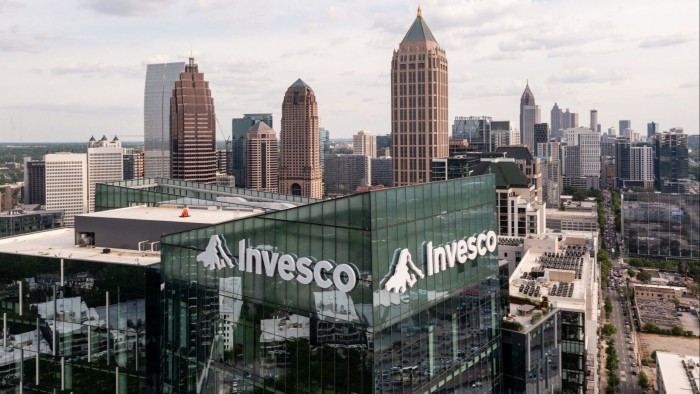Big asset managers adopt ‘vulture’ tactics in distressed debt fights

Roula Khalaf, Editor of the FT, selects her favourite stories in this weekly newsletter.
When Invesco bought the largest chunk of $620mn of apparently low-risk loans issued by heater and air conditioner parts maker Robertshaw in 2018, it seemed just like many investments the US asset manager had made before.
As a traditional, mainstream investor, Invesco was looking for debt that was likely to be repaid in full, or “par”, at maturity while also delivering an attractive coupon — unlike the more aggressive “vulture” investors that typically buy debt at knockdown prices with the intention of getting involved in complex legal fights.
But six years later, Invesco is now the central player in one of the ugliest distressed debt brawls in recent memory, already featuring in four different lawsuits in Texas and New York.
In one complaint, filed jointly by Robertshaw’s private equity owner One Rock and creditors formerly allied with Invesco, the asset manager has been accused of attempting to “force Robertshaw into a rushed Chapter 11 [bankruptcy] filing” and “taking advantage of Robertshaw’s sensitive financial condition to enhance its own returns”.
Feuding among claimants in troubled companies is not new. But market participants note a crucial shift in distressed debt restructurings in recent years, with even the most senior lenders — who were historically able to avoid the brutal battles waged between private equity firms and junk bondholders beneath them — now being dragged into the fray to knock heads with other lender brethren.
With lowly rated, highly leveraged companies under pressure from high interest rates, and loan recoveries falling, traditional asset managers such as Invesco are now using tactics similar to conventional distressed debt specialists such as Apollo and Elliott Management. Traditional managers argue they have no choice but to act defensively in such situations as a duty to their clients.
“Unlike opportunistic credit funds, which intentionally acquire debt after it already has traded at a substantial discount, par holders encounter distressed situations by accident,” said Vincent Indelicato, a law partner at Proskauer Rose, where he runs the restructuring practice.
“They have realised that, unless they have a seat at the table, they will find themselves on the menu.”
According to S&P Global Ratings, average discounted loan recoveries for 2022 to 2023 were just 61.5 cents on the dollar, nearly 12 percentage points below their long-term average to the end of September.
After struggling in the wake of the coronavirus pandemic due to supply chain disruptions and rising operating costs, Robertshaw was able to raise nearly $100mn in fresh debt through a new loan last spring.
Four firms — Invesco, Bain Capital, Canyon Capital and Eaton Vance — provided the new money. But in exchange, they swapped existing loans worth more than $400mn into a senior priority position — known as an “uptier exchange” — seizing the senior claim on Robertshaw’s collateral and leaving behind a minority of existing lenders.
Guardian Life Insurance, a lender that owned Robertshaw loans through a so-called collateralised loan obligation, sued the company and the Invesco-led group of lenders in New York state court, arguing that the debt’s legal documents precluded Guardian Life from being pushed down the pecking order.
But as Guardian Life’s lawsuit made its way through court last year, Robertshaw’s struggling operations forced it to seek more cash.
At the same time, the alliance between Invesco, the three other lenders and Robertshaw fully disintegrated.
Invesco bought up a majority stake across two Robertshaw loan tranches. By late autumn, the fund manager began to assert its power, attempting to force the company to restructure its debt on Invesco’s preferred terms.
“Invesco worked tirelessly to garner these rights in respect of the company. It sponsored a series of financing transactions designed to keep the company afloat,” the asset manager wrote in court papers citing its “good faith”.
Robertshaw, however, took the opposite view in its filing, writing that it “became clear that Invesco abandoned any pretence of good faith negotiations over any solution other than a Chapter 11 filing”, in which the company said Invesco would seize ownership.
In December, the plot thickened even further. Robertshaw teamed up with Bain, Canyon and Eaton Vance — the three investors that only months earlier had been teammates of Invesco — to neutralise the lead fund manager.
The three lenders and the company assembled a complex financing where they exercised their right to repurchase at a premium the loans held by Invesco, in effect removing the investor against its will from the Robertshaw situation.
Invesco responded by suing the company and the three investors in a New York state court, calling the financing that pushed it out a “sham” that violated the loan contract.
In February, Robertshaw filed for bankruptcy in a Texas federal court with the support of Bain, Canyon and Eaton Vance. It immediately sued both Guardian Life and Invesco in the bankruptcy court to validate the May 2023 and December 2023 financings as above board and not violating the loan contract terms, as Guardian Life and Invesco asserted.
Robertshaw and Guardian Life settled their litigation last month.
Robertshaw, One Rock, Bain, Canyon, Eaton Vance, Guardian Life and Invesco declined to comment.
When interest rates were ultra-low and financing was easier to come by, companies and private equity sponsors were able to negotiate looser credit agreements, giving borrowers flexibility for future manoeuvring. The period of cheap money also fuelled a borrowing frenzy, with buyout firms loading businesses up with low-quality debt.
Market participants say the tactics now being used by creditors in several recent distressed situations are a result of such a degradation of protections offered to investors in debt documents.
“This is Darwinism, right, you have to evolve,” said one portfolio manager. “The market is changing, the game is changing.”
Comments